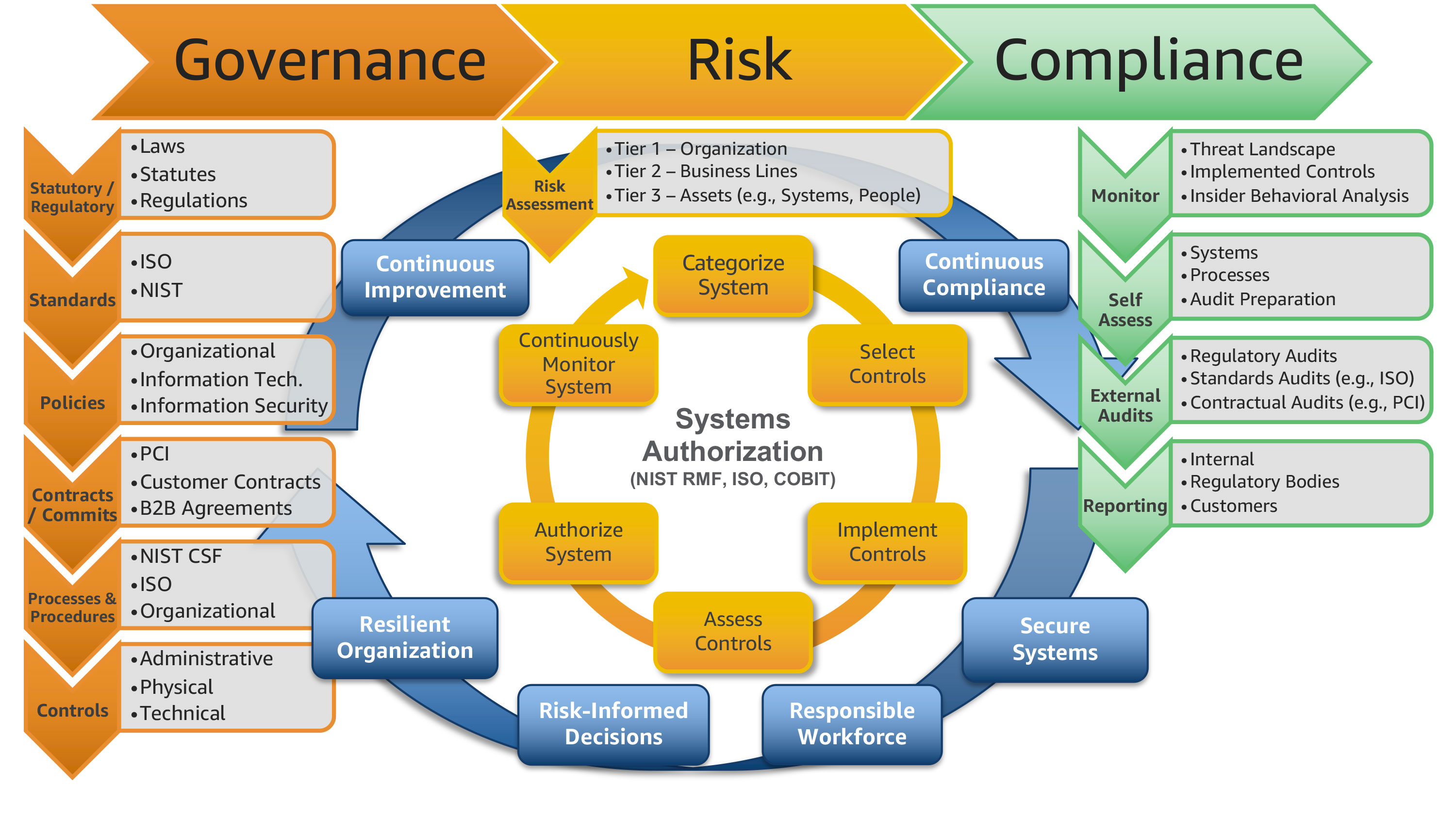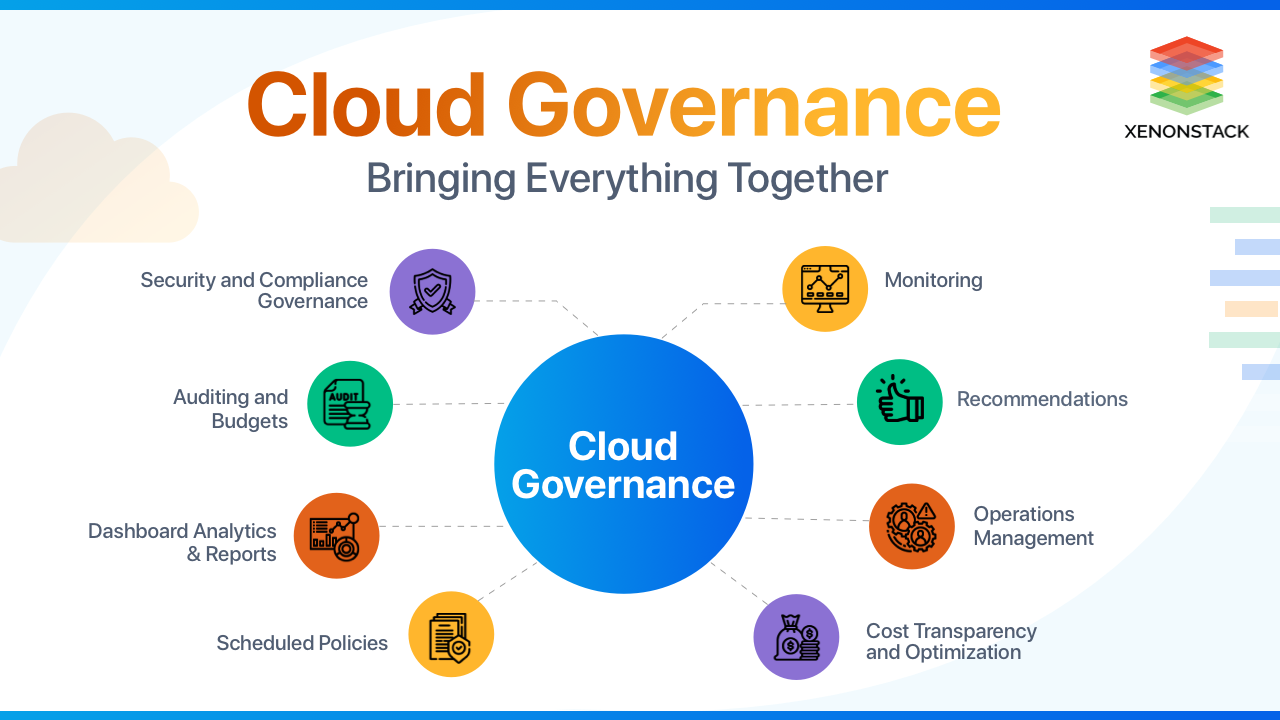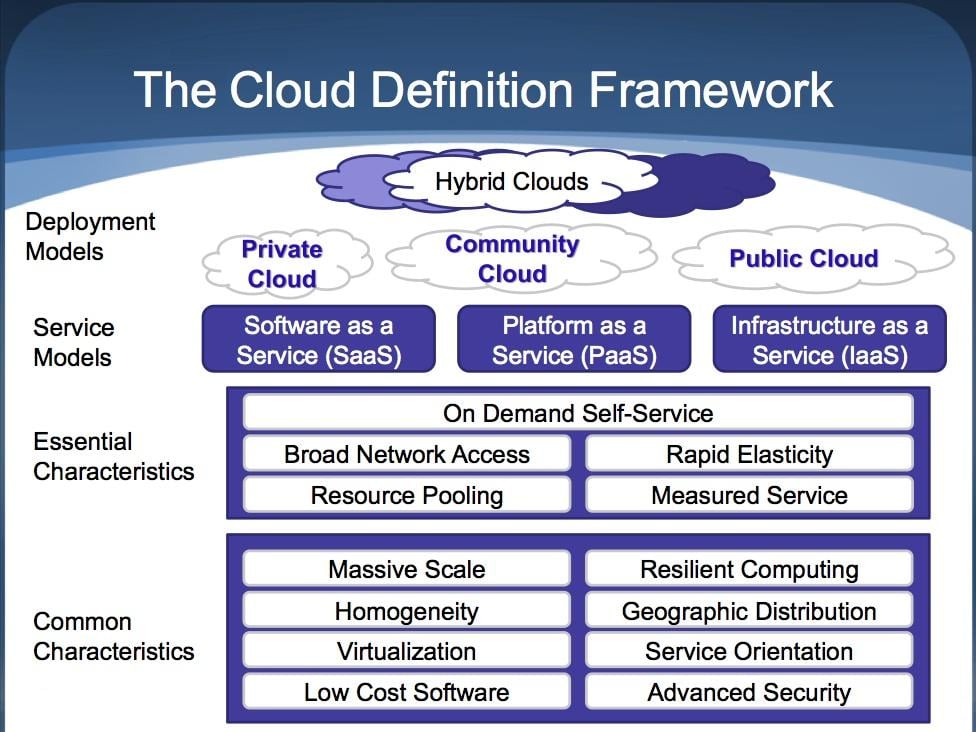As the demand for efficient cloud services continues to rise, understanding cloud service governance is crucial for organizations to ensure optimized cloud usage. Cloud service governance encompasses key pillars, benefits, challenges, best practices, and emerging trends that shape the effective management of cloud resources. By implementing robust governance strategies, businesses can enhance performance, security, and cost-effectiveness in their cloud operations.

Unveiling the Essence of Cloud Service Governance
Cloud service governance stands as a structured framework consisting of policies, processes, and controls meticulously designed to guarantee the productive and judicious utilization of cloud services. This overarching system is pivotal in harmonizing cloud utilization with organizational objectives, mitigating risks, and streamlining costs for maximum operational efficiency. Notably, governance serves as a linchpin for upholding compliance standards, fortifying security measures, and safeguarding data integrity and privacy within the cloud environment.

Key Pillars of Cloud Service Governance
Strategy and Planning
In the realm of Cloud Service Governance, strategy and planning stand as foundational pillars. Organizations must meticulously define cloud adoption goals, establish comprehensive policies, and outline strategic roadmaps for seamless cloud integration and management. This pillar ensures alignment between cloud initiatives and overall business objectives, fostering efficiency and agility in cloud operations.
Risk Management
Another critical pillar of Cloud Service Governance is risk management. It involves the proactive identification, thorough assessment, and effective mitigation of potential risks associated with cloud services. By implementing robust risk management practices, organizations can safeguard their data, mitigate security vulnerabilities, and ensure business continuity in the dynamic landscape of cloud computing.
Compliance and Audit
Compliance and audit form integral pillars within Cloud Service Governance, ensuring that organizations adhere to regulatory requirements and industry standards. By establishing robust compliance frameworks and conducting regular audits, businesses can maintain data integrity, enhance trust with stakeholders, and mitigate legal risks associated with non-compliance in cloud operations.
Cost Optimization
Cost optimization plays a pivotal role in Cloud Service Governance, focusing on monitoring and controlling cloud spending to maximize value and ROI. By implementing cost-efficient strategies, organizations can avoid unexpected expenses, optimize resource utilization, and align cloud investments with identified business priorities, ultimately driving financial sustainability and operational efficiency.
Performance Management
Performance management emerges as a key pillar of Cloud Service Governance, emphasizing the measurement and continuous improvement of the performance of cloud services. Through monitoring key performance indicators (KPIs), analyzing metrics, and implementing performance optimization strategies, organizations can ensure optimal service levels, enhance user experience, and drive overall business success in the cloud environment.

Maximizing Business Value with Cloud Service Governance
Improved Cloud ROI
Cloud Service Governance plays a pivotal role in enhancing the return on investment (ROI) by optimizing cloud resource usage and ensuring strict cost controls. Through effective governance strategies, organizations can streamline their cloud operations, allocate resources efficiently, and minimize unnecessary expenses, thereby maximizing the value derived from cloud services.
Enhanced Security and Compliance
By implementing robust cloud service governance frameworks, businesses can significantly improve their security posture and ensure compliance with industry regulations. Governance practices help in reducing risks associated with data breaches and ensure that cloud operations adhere to stringent regulatory requirements, fostering a secure and compliant cloud environment.
Increased Agility and Innovation
Cloud service governance fosters increased agility and innovation by enabling organizations to adopt cloud technologies faster and more securely. Governance frameworks provide the necessary structure and controls to support rapid adoption of new technologies, empowering businesses to innovate and adapt to changing market demands swiftly within a secure cloud ecosystem.
Improved Decision-Making and Performance Metrics
Cloud service governance equips organizations with valuable data-driven insights and performance metrics, enhancing decision-making processes. By leveraging governance mechanisms, businesses can access real-time data analytics, track performance indicators, and make informed decisions to optimize cloud operations, improve efficiency, and drive overall business growth.

Implementing Cloud Service Governance
Establishing Clear Governance Policies and Procedures
Implementing cloud service governance starts with establishing comprehensive policies and procedures that define how cloud resources should be managed within an organization. These guidelines encompass aspects like data security, access controls, compliance requirements, and resource allocation to ensure consistency and control in cloud operations.
Utilizing Tools and Technologies for Monitoring, Reporting, and Enforcement
Incorporating suitable tools and technologies is essential for effective cloud service governance. From cloud management platforms to automated compliance tools, these resources enable real-time monitoring, detailed reporting on cloud usage, and enforcement of governance policies to maintain operational transparency and security.
Assigning Roles and Responsibilities for Governance Tasks
Clear delineation of roles and responsibilities is crucial in the implementation of cloud service governance. Designating individuals or teams to oversee specific governance tasks such as monitoring compliance, managing access controls, and evaluating performance ensures accountability and streamlines the governance process for efficient cloud operations.
Conducting Regular Audits and Reviews for Compliance and Effectiveness
Regular audits and reviews play a vital role in ensuring the efficacy of cloud service governance measures. By periodically assessing adherence to policies, identifying areas for improvement, and evaluating the overall effectiveness of governance strategies, organizations can proactively address issues, mitigate risks, and optimize their cloud environment for enhanced performance and security.

Addressing Challenges of Cloud Service Governance
Complexity of Cloud Environments and the Need for Specialized Knowledge
The intricate nature of cloud environments poses a significant challenge for organizations, requiring specialized knowledge to navigate effectively. With diverse cloud services, data storage options, and security requirements, ensuring proper governance without expert understanding can lead to mismanagement and security vulnerabilities in Cloud Service Governance.
Rapid Pace of Cloud Innovation and the Need to Adapt Governance Practices
Cloud technology evolves swiftly, demanding constant adaptation of governance practices to keep up with new services and security threats. Staying abreast of these innovations is crucial to maintaining effective governance strategies that align with current industry best practices in Cloud Service Governance.
Lack of Standardized Governance Frameworks Across Different Cloud Providers
The absence of standardized governance frameworks across various cloud providers complicates governance efforts. Organizations face the challenge of harmonizing governance policies and practices to fit diverse cloud platforms, leading to inconsistencies in governance application and potential compliance issues with Cloud Service Governance.
Resistance to Change and the Need for Cultural Shifts Within Organizations
Introducing cloud service governance may encounter resistance within organizations, necessitating cultural shifts to foster acceptance and collaboration. Overcoming ingrained practices and promoting a culture of accountability and transparency are essential for successful implementation of governance measures in Cloud Service Governance.

Best Practices for Cloud Service Governance
Involving Stakeholders from Business, IT, and Security Teams
Incorporating inputs from diverse stakeholders like business, IT, and security teams ensures that cloud governance aligns with organizational objectives, technical requirements, and security protocols. This collaboration fosters a holistic approach to governance, enhancing decision-making processes and overall cloud management efficiency.
Leveraging Automation Tools for Streamlined Governance Processes
Implementing automation tools for cloud service governance facilitates the deployment of consistent policies, enforcement of compliance measures, and efficient resource allocation. Automation streamlines routine tasks, reduces manual errors, and improves the overall agility of cloud governance processes, enabling organizations to adapt swiftly to changing needs.
Continuous Monitoring and Review of Governance Practices
Regular evaluation of governance practices is crucial to maintain relevance and effectiveness in cloud operations. Continuous monitoring allows for timely identification and resolution of issues, ensuring adherence to standards, optimizing resource utilization, and bolstering security measures. It also supports proactive decision-making based on real-time data insights.
Seeking External Expertise and Industry Best Practices
Engaging with external experts and staying abreast of industry best practices provides valuable guidance for refining cloud service governance strategies. Leveraging external expertise offers fresh perspectives, helps in identifying blind spots, and ensures that governance practices are in line with the latest trends and compliance standards, thereby enhancing overall governance effectiveness.

Trends Shaping Cloud Service Governance
Integration with DevOps and Agile methodologies
Integration of Cloud Service Governance with DevOps and Agile methodologies enables organizations to streamline cloud adoption by facilitating faster, more secure deployments. By aligning governance practices with these methodologies, companies can ensure efficient collaboration between development, operations, and security teams, leading to improved agility and enhanced risk management in cloud environments.
Leveraging AI and ML for automated compliance
The utilization of Artificial Intelligence (AI) and Machine Learning (ML) in Cloud Service Governance empowers businesses to automate compliance monitoring and risk management processes. These technologies enable real-time analysis of vast amounts of data, enhancing decision-making and ensuring continuous compliance with regulatory requirements, ultimately boosting security and operational efficiency in cloud environments.
Emphasis on data privacy and protection
In the realm of cloud governance, a significant trend revolves around a heightened focus on data privacy and protection. Organizations are increasingly prioritizing robust governance frameworks that safeguard sensitive data stored in the cloud. Compliance with data protection regulations and the implementation of encryption technologies are becoming fundamental aspects of cloud service governance strategies to mitigate data breaches and ensure data integrity.
Evolution of cloud-native governance tools
The evolution of cloud-native governance tools and frameworks is reshaping how organizations manage and optimize their cloud resources. These tools, specifically designed for cloud environments, offer enhanced visibility, control, and automation capabilities, enabling businesses to efficiently govern their cloud deployments. Integration of these advanced tools into governance strategies enhances scalability, flexibility, and overall performance in cloud service management.
